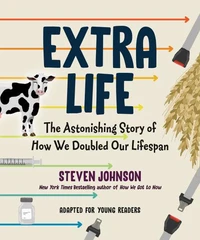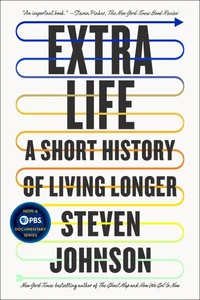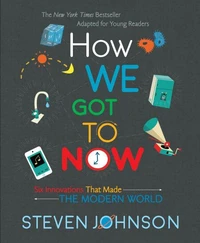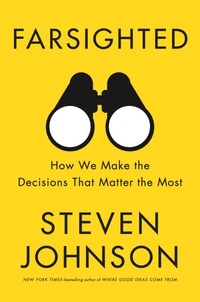Where Good Ideas come from
Par :Formats :
Disponible dans votre compte client Decitre ou Furet du Nord dès validation de votre commande. Le format ePub protégé est :
- Compatible avec une lecture sur My Vivlio (smartphone, tablette, ordinateur)
- Compatible avec une lecture sur liseuses Vivlio
- Pour les liseuses autres que Vivlio, vous devez utiliser le logiciel Adobe Digital Edition. Non compatible avec la lecture sur les liseuses Kindle, Remarkable et Sony
- Non compatible avec un achat hors France métropolitaine
 , qui est-ce ?
, qui est-ce ?Notre partenaire de plateforme de lecture numérique où vous retrouverez l'ensemble de vos ebooks gratuitement
Pour en savoir plus sur nos ebooks, consultez notre aide en ligne ici
- Nombre de pages336
- FormatePub
- ISBN978-0-14-196459-1
- EAN9780141964591
- Date de parution07/10/2010
- Protection num.Adobe DRM
- Infos supplémentairesepub
- ÉditeurPENGUIN
Résumé
Where do good ideas come from? And what do we need to know and do to have more of them? In Where Good Ideas Come From, Steven Johnson, one of our most innovative popular thinkers, explores the secrets of inspiration. Steven Johnson has spent twenty years immersed in creative industries, was active at the dawn of the internet and has a unique perspective that draws on his fluency in fields ranging from neurobiology to new media.
Why have cities historically been such hubs of innovation? What do the printing press and Apple have in common? And what does this have to do with the creation and evolution of life itself? Johnson presents the answers to these questions and more in his infectious, culturally omnivoracious style, using examples from thinkers in a range of disciplines - from Charles Darwin to Tim Berners-Lee - to provide the complete, exciting, and encouraging story of inspiration.
He identifies the five key principles to the genesis of great ideas, from the cultivation of hunches to the importance of connectivity and how best to make use of new technologies. Most exhilarating is his conclusion: with today's tools and environment, radical innovation is extraordinarily accessible to those who know how to cultivate it. By recognizing where and how patterns of creativity occur - whether within a school, a software platform or a social movement - he shows how we can make more of our ideas good ones.
Why have cities historically been such hubs of innovation? What do the printing press and Apple have in common? And what does this have to do with the creation and evolution of life itself? Johnson presents the answers to these questions and more in his infectious, culturally omnivoracious style, using examples from thinkers in a range of disciplines - from Charles Darwin to Tim Berners-Lee - to provide the complete, exciting, and encouraging story of inspiration.
He identifies the five key principles to the genesis of great ideas, from the cultivation of hunches to the importance of connectivity and how best to make use of new technologies. Most exhilarating is his conclusion: with today's tools and environment, radical innovation is extraordinarily accessible to those who know how to cultivate it. By recognizing where and how patterns of creativity occur - whether within a school, a software platform or a social movement - he shows how we can make more of our ideas good ones.
Where do good ideas come from? And what do we need to know and do to have more of them? In Where Good Ideas Come From, Steven Johnson, one of our most innovative popular thinkers, explores the secrets of inspiration. Steven Johnson has spent twenty years immersed in creative industries, was active at the dawn of the internet and has a unique perspective that draws on his fluency in fields ranging from neurobiology to new media.
Why have cities historically been such hubs of innovation? What do the printing press and Apple have in common? And what does this have to do with the creation and evolution of life itself? Johnson presents the answers to these questions and more in his infectious, culturally omnivoracious style, using examples from thinkers in a range of disciplines - from Charles Darwin to Tim Berners-Lee - to provide the complete, exciting, and encouraging story of inspiration.
He identifies the five key principles to the genesis of great ideas, from the cultivation of hunches to the importance of connectivity and how best to make use of new technologies. Most exhilarating is his conclusion: with today's tools and environment, radical innovation is extraordinarily accessible to those who know how to cultivate it. By recognizing where and how patterns of creativity occur - whether within a school, a software platform or a social movement - he shows how we can make more of our ideas good ones.
Why have cities historically been such hubs of innovation? What do the printing press and Apple have in common? And what does this have to do with the creation and evolution of life itself? Johnson presents the answers to these questions and more in his infectious, culturally omnivoracious style, using examples from thinkers in a range of disciplines - from Charles Darwin to Tim Berners-Lee - to provide the complete, exciting, and encouraging story of inspiration.
He identifies the five key principles to the genesis of great ideas, from the cultivation of hunches to the importance of connectivity and how best to make use of new technologies. Most exhilarating is his conclusion: with today's tools and environment, radical innovation is extraordinarily accessible to those who know how to cultivate it. By recognizing where and how patterns of creativity occur - whether within a school, a software platform or a social movement - he shows how we can make more of our ideas good ones.





















